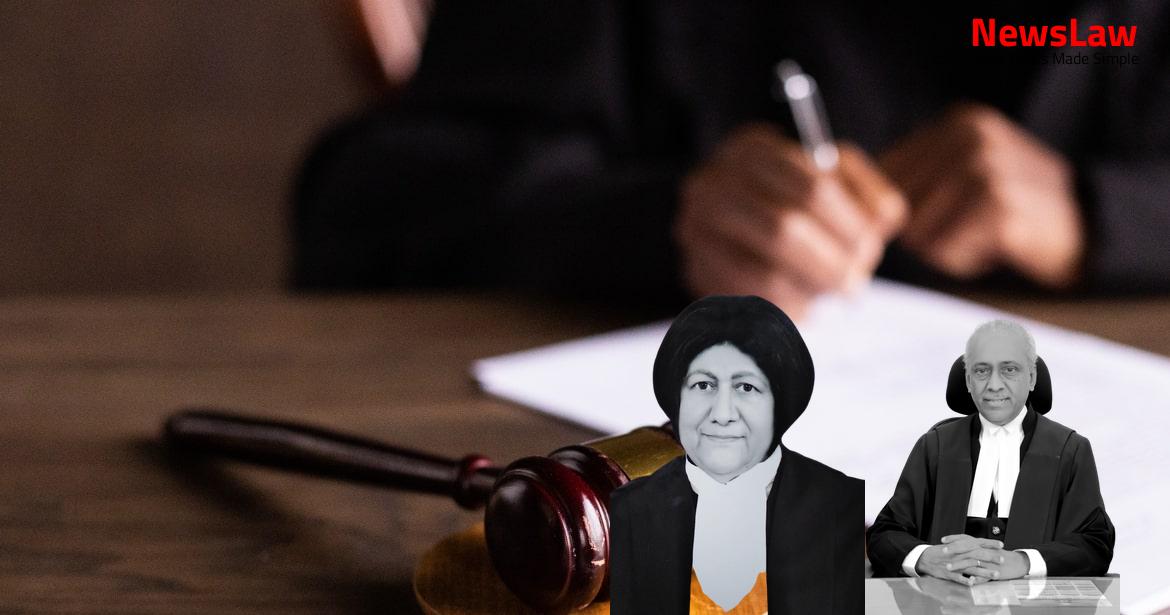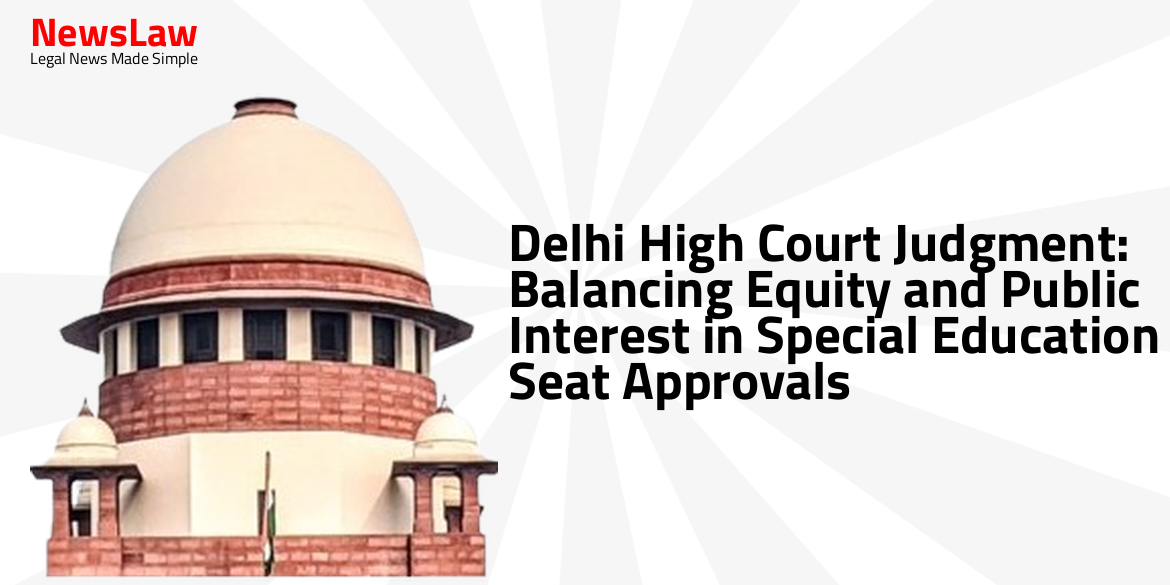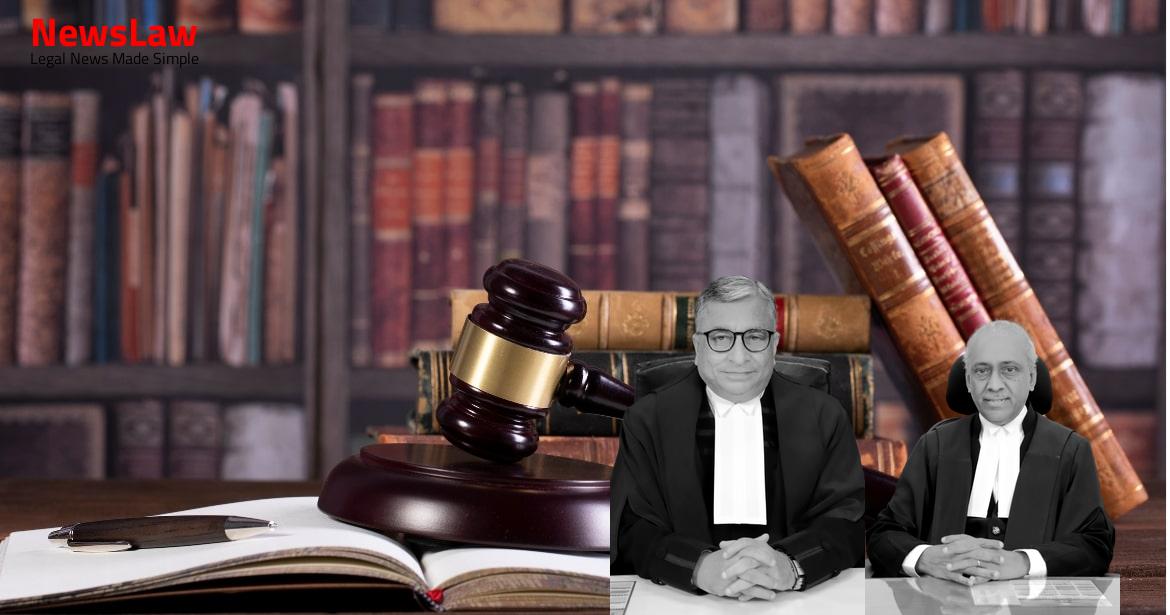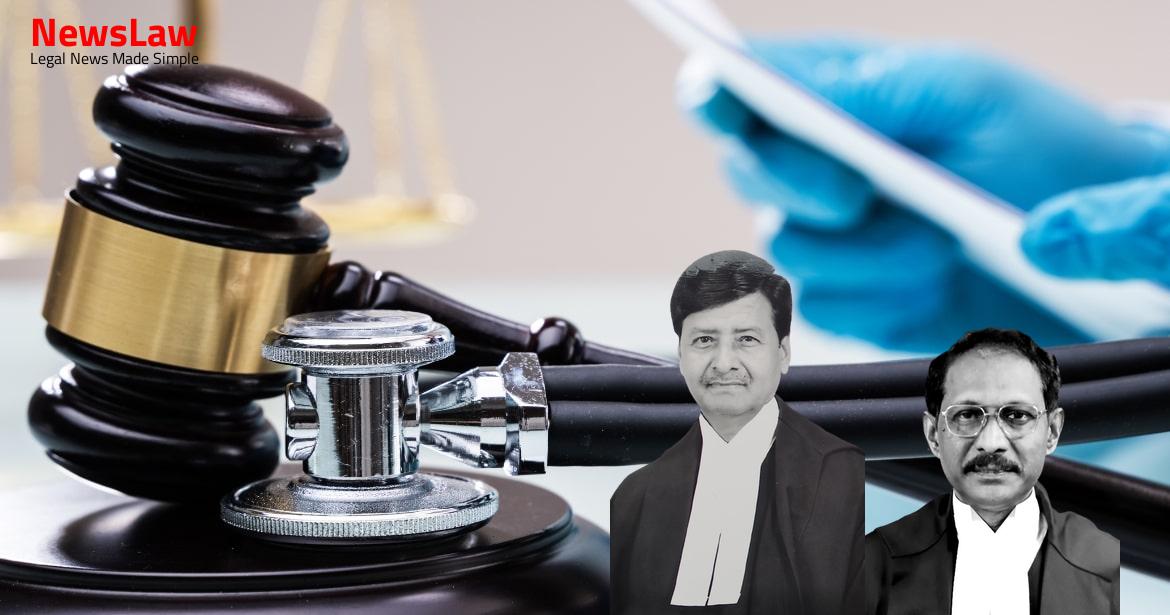Delve into the intricate legal analysis conducted by the court in a contentious building redevelopment dispute. This summary highlights the nuanced perspectives and considerations that influenced the court’s decisions, shedding light on the legal intricacies involved in such cases.
Facts
- On 29.9.2020, M/s Shetgiri and Associates, Architects suggested that the structure could last 5 to 6 more years with repairs and regular maintenance.
- On 24.11.2020, the Bombay High Court allowed Respondent No.1 to begin removing an adjoining wall with the help of the architects at his own expense and risk.
- The removal work had to be supervised by Corporation officials to prevent damage to the Appellant’s property.
- The appeal challenges the High Court’s decision in the writ petition filed by Respondent No.1 regarding the removal of the wall.
- The Appellant owns a property in Chembur, Mumbai, and the removal of the wall is related to this property.
- The premises in question consists of 3 three-storied interlinked structures built in 1930.
- Structural Audit Reports classified the buildings into C1, C2-A, C2-B, and C3 categories based on their condition.
- Structures interlinked, so repair of one would affect the stability of adjacent structures.
- Notices issued under Section 354 of the Municipal Corporation Act for evacuation and demolition due to dangerous conditions.
- Technical Advisory Committee confirmed critical condition of the buildings, leading to C1 category classification.
- Attempts made to urge occupants, including Respondent No.1, to vacate for safety.
- Challenges made by Respondent No.1 against demolition orders.
- Contradictory reports led to different opinions about repairs and safety of the structures.
- Appeal against City Civil Court order rejected, affirming need for evacuation and demolition.
- No maintenance carried out for years, making repair economically unviable.
- Technical Advisory Committee declared buildings dangerous and over 90 years old, falling under C-1 category.
Also Read: Challenging Conviction: Legal Analysis Spotlight
Analysis
- Damaged structural members like load bearing walls and its plaster, brick pillars, beams, and slabs need immediate repairs.
- External walls should be repaired with PCC bedding and damp-proof course to protect from subsoil action.
- Propping and barricading should be provided during repairs.
- The report by Shetgiri and Associates highlighted damages to external walls and RCC elements, indicating urgent repairs were necessary.
- The report specifically noted limitations and exclusions regarding the scope of the audit.
- The court erred in not considering the limitations of the report and making a comparative assessment of conflicting technical reports.
- The High Court’s decision to direct removal of a wall was criticized, especially given conflicting reports from other architects.
- Any delay in initiating restoration could lead to structural failure with serious consequences for occupants and passersby.
- The High Court should not have adjudicated on disputed technical facts in the case.
- Regular maintenance by the concerned authority is advised to prevent severe damage in the future.
- The report is a preliminary structural health check and not a stability certificate for the building.
- Structural repairs should be undertaken under the supervision of a registered structural engineer.
- The age of the structure, over 45 years, indicates it has outlived its economic life, raising concerns about its structural condition and potential risks.
Also Read: Analysis of Contempt Charges for Breach of Undertaking
Decision
- The petitioner has entered into MOU with 15 out of 24 tenants for accepting alternate accommodation and vacating the premises.
- The appellant undertakes to pay eleven months’ rent in advance by post-dated cheque.
- The appellant guarantees completion of redevelopment work within 2 years, with provision to pay rent/transit accommodation in case of delays due to natural calamities or uncontrollable factors.
- MCGM issued orders to vacate the building, protecting the area of Respondent No.1 and other tenants.
- Appellant to provide alternative accommodation or rent if Respondent No.1 does not accept the rent offer.
- Appellant to provide area equivalent to Respondent No.1’s current occupation after redevelopment, free of charge.
- Appellant to pay extra rent for delays in redevelopment due to natural calamities, strikes, etc.
- Deposit amount for water tax, property tax & sewerage tax for redevelopment to be covered.
- All interim orders are vacated, and the appeal is allowed with specific terms outlined.
- Appellant to provide monthly rent for the authorized legal area occupied by Respondent No.1 during the redevelopment process.
- Appellant to provide advanced rent and additional charges for freight.
- 15 out of 24 tenants have vacated premises, awaiting approval for redevelopment from competent authority.
- Permission, no-objection certificates, and legal actions for redevelopment to be handled by the appellant.
- Newly constructed flat to be provided to Respondent No.1 post-redevelopment, with no charges for the accommodation.
- Appellant to bear all costs for redevelopment without charging any fees to Respondent No.1.
- Monthly rent at a specified rate to be provided to Respondent No.1.
- Summary of rights and obligations outlined for both parties regarding redevelopment and accommodation.
Also Read: Land Dispute: Court’s Analysis on Condonation of Delay
Case Title: SHUBHAS JAIN Vs. RAJESHWARI SHIVAM (2021 INSC 345)
Case Number: C.A. No.-002848-002848 / 2021



